
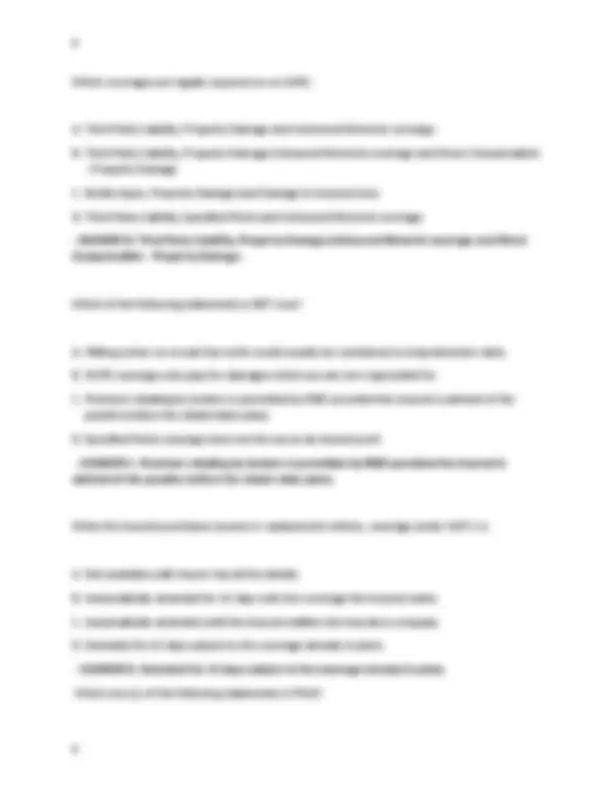
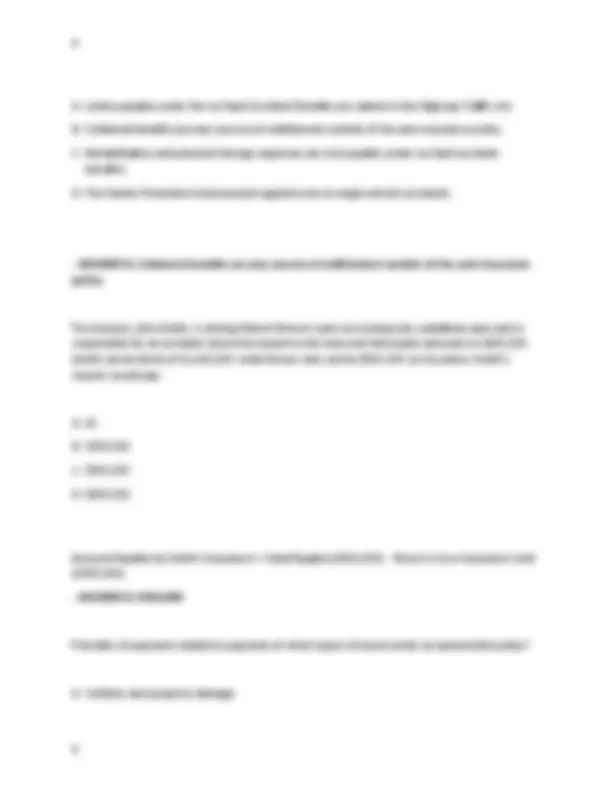
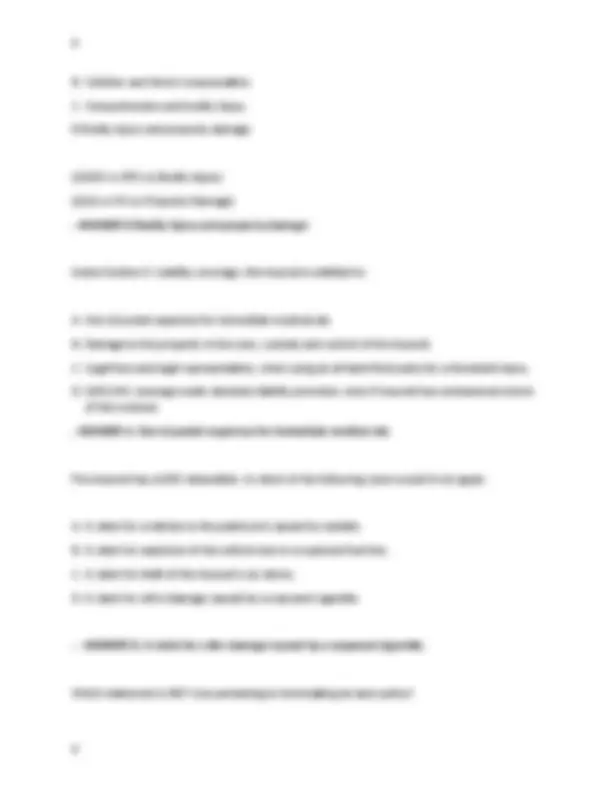
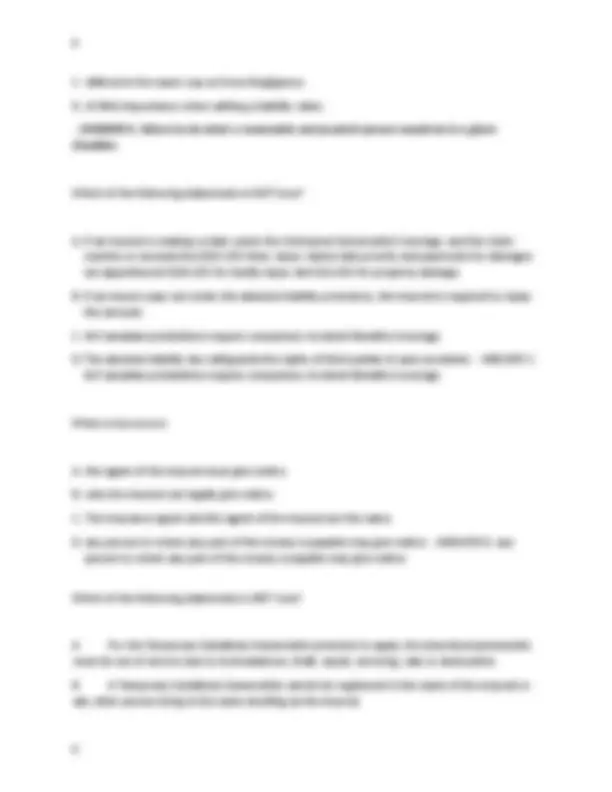
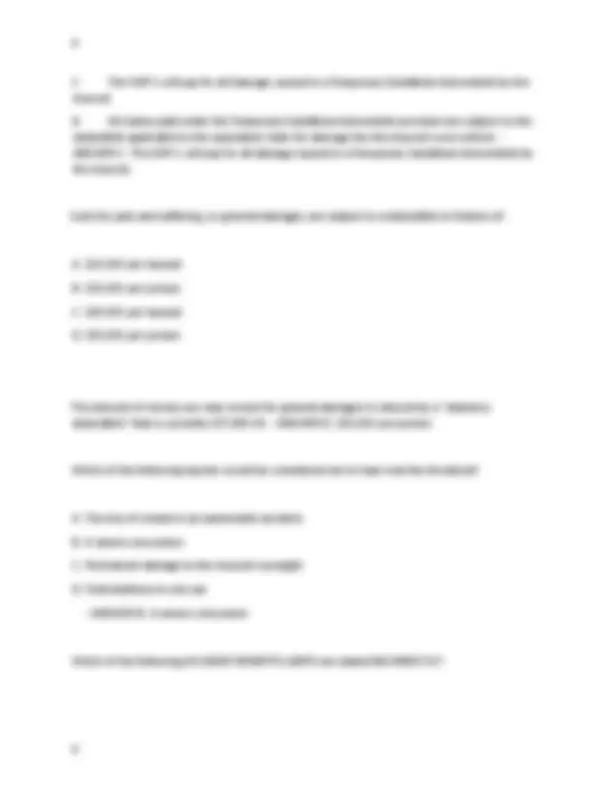
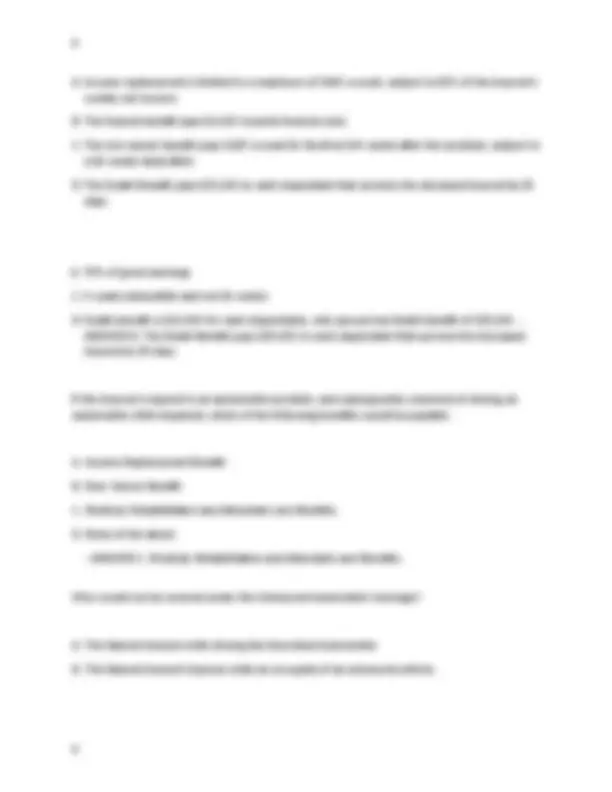
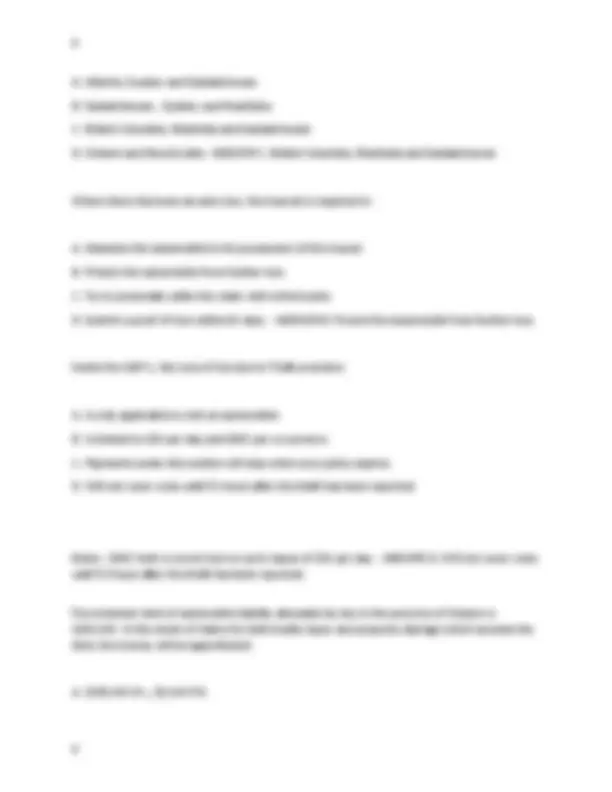
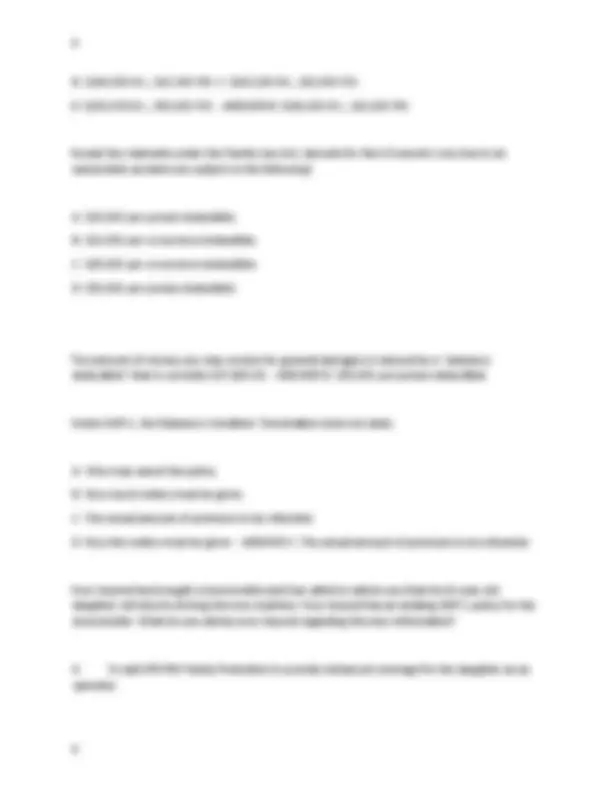
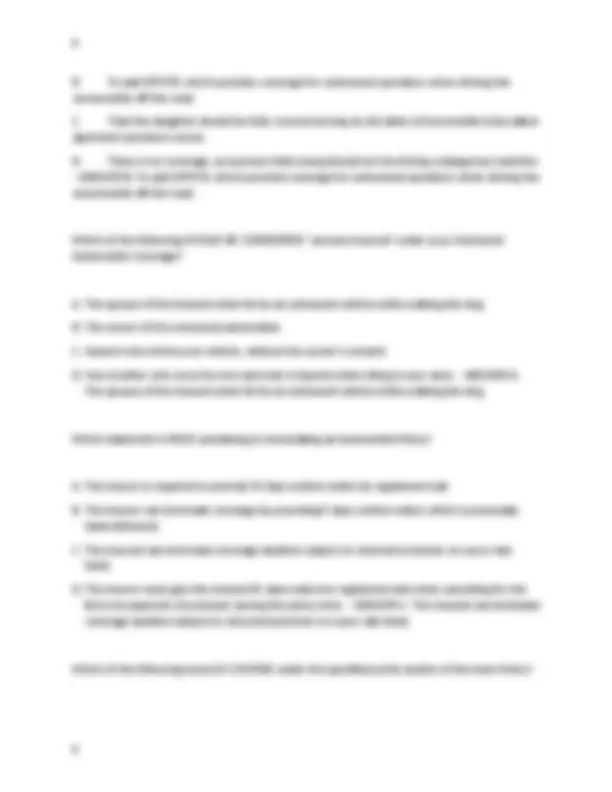
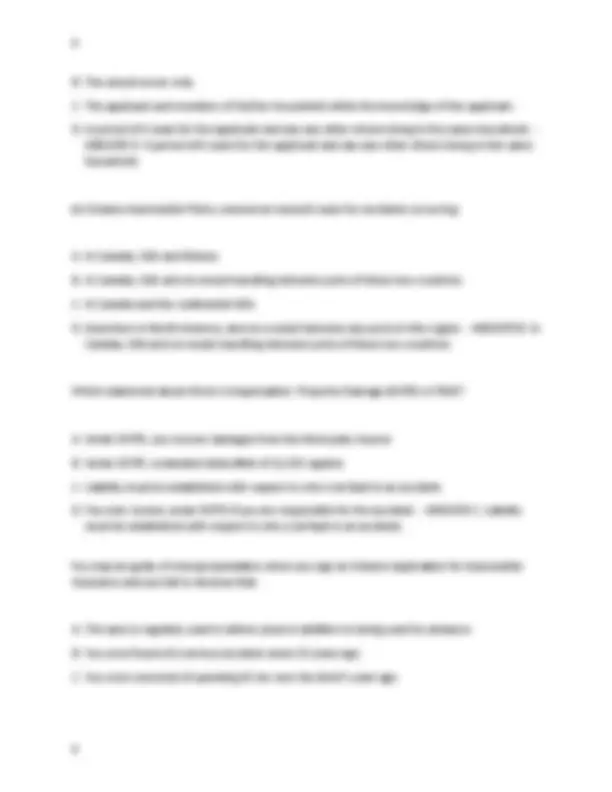
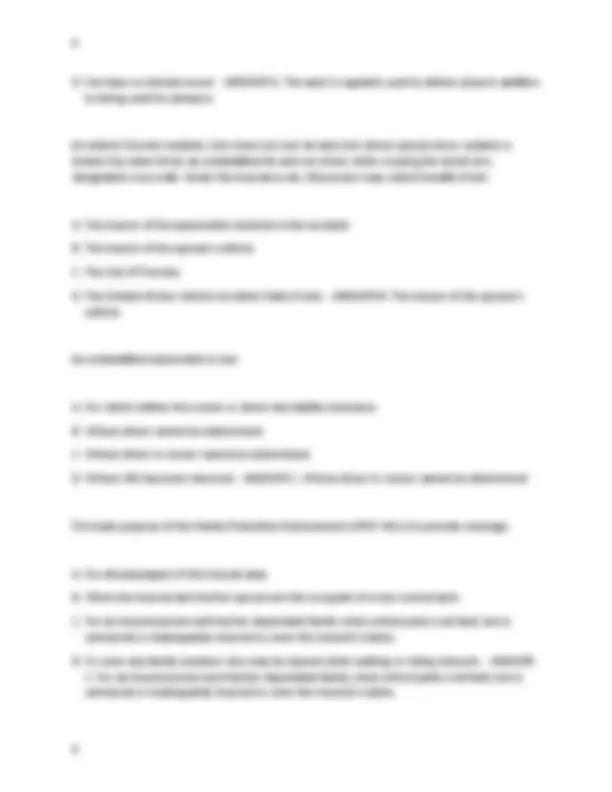
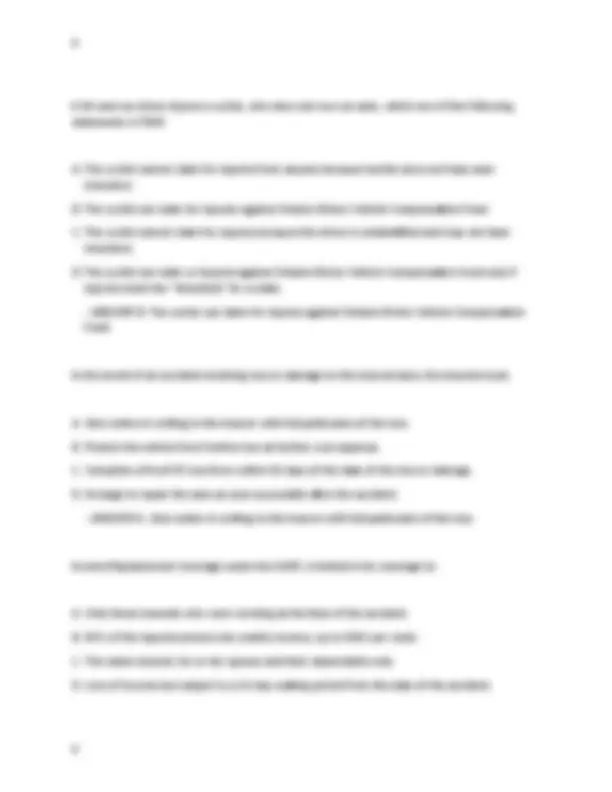
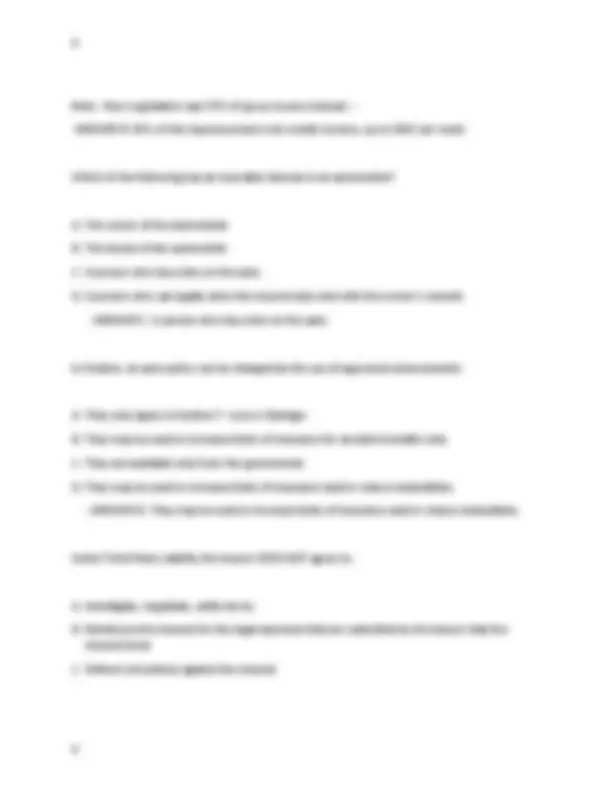
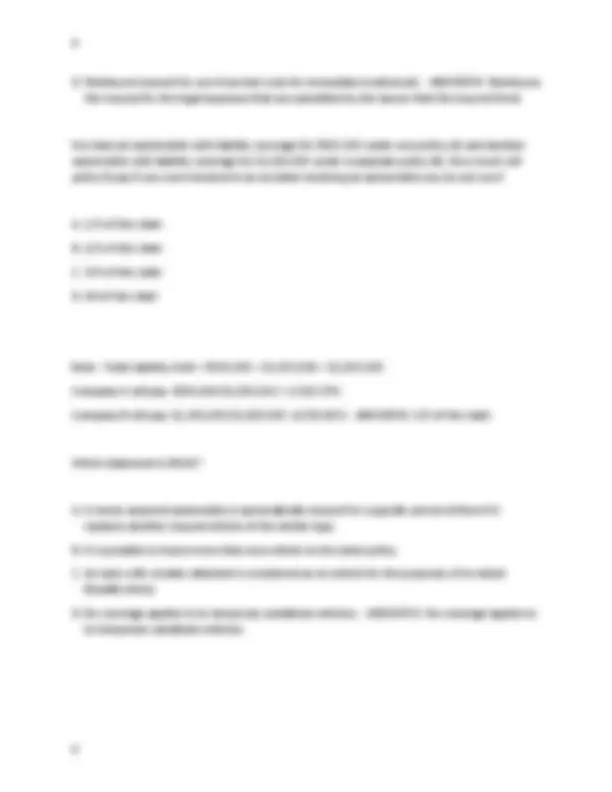


Study with the several resources on Docsity

Earn points by helping other students or get them with a premium plan


Prepare for your exams
Study with the several resources on Docsity

Earn points to download
Earn points by helping other students or get them with a premium plan
Community
Ask the community for help and clear up your study doubts
Discover the best universities in your country according to Docsity users
Free resources
Download our free guides on studying techniques, anxiety management strategies, and thesis advice from Docsity tutors
his document provides a complete overview of General Insurance, covering the foundational concepts used in both personal and commercial lines. It includes key topics such as the principles of insurance (indemnity, insurable interest, utmost good faith), types of general insurance (property, liability, auto, travel, marine, and health), risk assessment, policy structures, underwriting, and the claims process. Ideal for students pursuing business, finance, actuarial science, or preparing for insurance licensing exams (e.g., FSRA, IRDAI, CIP, or CII qualifications). Real-world examples and policy breakdowns are provided for clearer understanding of insurance operations and regulatory frameworks.
Typology: Exams
1 / 22

This page cannot be seen from the preview
Don't miss anything!















Where would you find Upset Coverage under the OAP1? A. In the Specified Perils Coverage. B. Within the Collision Coverage Only. C. In the Comprehensive Coverage. D. In both the Collision and All Perils Coverage.
- ANSWER D. In both the Collision and All Perils Coverage. The wordings on the OAP 1 that are legislated are known as the: A. Conditions B. General Conditions C. Statutory Conditions D. Standard Wordings. - ANSWER C. Statutory Conditions Under Ontario's Automobile legislation, Bill 59:
A. Individuals are not permitted to sue for economic losses unless their injuries meet the threshold. B. Individuals are permitted to sue for Pain and Suffering providing that it is not greater than 80% of their net income. C. Individuals are permitted to sue for medical expenses for catastrophic impairments. D. Individuals are not permitted to sue under any circumstances.
- ANSWER C. Individuals are permitted to sue for medical expenses for catastrophic impairments. Under the requirements where loss or damage to the automobile occurs: A. the insurer is required to make payment to the insured for actual cash value. B. the insurer can repair or replace the damaged property with the like kind and quality. C. the insurer must pay within 90 days of receipt of proof of loss. D. the insured must protect the vehicle from further damage at his/her own expense. - ANSWER B. the insurer can repair or replace the damaged property with the like kind and quality. A misrepresentation fact on an application for automobile insurance (OAF 1 ) may cause the insurer to A. Increase the deductible imposed. B. Make an official complaint to the Superintendent of Insurance in the Province. C. Demand the completion of a corrected OAF 1. D. Void the contract. - ANSWER D. Void the contract.
A. Limits payable under the no-fault Accident Benefits are stated in the Highway Traffic Act. B. Collateral benefits are any sources of entitlement outside of the auto insurance policy. C. Rehabilitation and physical therapy expenses are not payable under no-fault accident benefits. D. The Family Protection Endorsement applied only in single vehicle accidents.
- ANSWER B. Collateral benefits are any sources of entitlement outside of the auto insurance policy. The insured, John Smith, is driving Robert Brown's auto as a temporary substitute auto and is responsible for an accident where the award to the innocent third party amounts to $800,000. Smith carries limits of $1,000,000 while Brown only carries $500,000 on his policy. Smith's insurer would pay: A. $ B. $300, C. $500, D. $800, Amount Payable by Smith's Insurance = Total Payable ($800,000) - Brown's Own Insurance Limit ($500,000) - ANSWER B. $300, Priorities of payment related to payment of which types of losses under an automobile policy? A. Collision and property damage.
B. Collision and direct compensation. C. Comprehensive and bodily injury. D Bodily injury and property damage ($190K or 95% to Bodily Injury) ($10k or 5% to Property Damage)
- ANSWER D Bodily injury and property damage Under Section 3: Liability coverage, the insured is entitled to: A. Out of pocket expenses for immediate medical aid. B. Damage to the property in the care, custody and control of the insured. C. Legal fees and legal representation, when suing an at-fault third party for a threshold injury. D. $200,000 coverage under absolute liability provision, even if insured has contravened a term of the contract. - ANSWER A. Out of pocket expenses for immediate medical aid. The insured has a $300 deductible. In which of the following cases would it not apply: A. A claim for scratches in the paintwork caused by vandals. B. A claim for explosion of the vehicle due to a ruptured fuel line. C. A claim for theft of the Insured's car stereo. D. A claim for a fire damage caused by a wayward cigarette. . - ANSWER D. A claim for a fire damage caused by a wayward cigarette. Which statement is NOT true pertaining to terminating an auto policy?
A. must pay for the damage to the automobile within the next year. B. must negotiate settlement. C. must pay for the damage to the automobile within 90 days. D. C. must pay for the damage to the automobile within 60 days.
- ANSWER D. C. must pay for the damage to the automobile within 60 days. The OAP 1 covers: A. Your car being driven in Mexico. B. Your auto on a ferryboat from Vancouver to San Francisco. C. Your auto in Bermuda. D. Your auto in England. - ANSWER B. Your auto on a ferryboat from Vancouver to San Francisco. What additional coverage is there in Comprehensive that is not available in Specified Perils? A. Fire B. Lightening C. Radioactive Contamination D. Vandalism - ANSWER D. Vandalism Ordinary Negligence is: A. failure to do what a reasonable and prudent person would do in a given situation. B. usually characterized by reckless, wanton and willful misconduct.
C. defined in the same way as Gross Negligence. D. of little importance when settling a liability claim.
- ANSWER A. failure to do what a reasonable and prudent person would do in a given situation. Which of the following statements in NOT true? A. If an insured is making a claim under the Uninsured Automobile Coverage, and the claim reaches or exceeds the $200,000 limit, injury claims take priority and payments for damages are apportioned $190,000 for bodily injury and $10,000 for property damage. B. If an insurer pays out under the absolute liability provisions, the insured is required to repay the amount. C. All Canadian jurisdictions require compulsory Accident Benefits Coverage. D. The absolute liability law safeguards the rights of third parties in auto accidents. - ANSWER C. All Canadian jurisdictions require compulsory Accident Benefits Coverage. When a loss occurs: A. the agent of the insured must give notice. B. only the insured can legally give notice. C. The insurance agent and the agent of the insured are the same. D. any person to whom any part of the money is payable may give notice. - ANSWER D. any person to whom any part of the money is payable may give notice. Which of the following statements is NOT true? A. For the Temporary Substitute Automobile provision to apply, the described automobile must be out of service due to its breakdown, theft, repair, servicing, sale or destruction. B. A Temporary Substitute Automobile cannot be registered in the name of the insured or any other person living in the same dwelling as the insured.
A. Income replacement is limited to a maximum of $400 a week, subject to 80% of the insured's weekly net income. B. The funeral benefit pays $6,000 towards funeral costs. C. The non earner benefit pays $185 a week for the first 104 weeks after the accident, subject to a 26 weeks deductible. D. The Death Benefit pays $25,000 to each dependant that survives the deceased insured by 30 days. A. 70% of gross earnings C. 4 weeks deductible and not 26 weeks. D. Death benefit is $10,000 for each dependants, only spouse has Death benefit of $25,000. - ANSWER D. The Death Benefit pays $25,000 to each dependant that survives the deceased insured by 30 days. If the insured is injured in an automobile accident, and subsequently convicted of driving an automobile while impaired, which of the following benefits would be payable: A. Income Replacement Benefit B. Non- Earner Benefit C. Medical, Rehabilitation and Attendant care Benefits. D. None of the above
C. Any relative of either the Named Insured or his or her spouse while the occupant of an uninsured vehicle. D. A dependant relative of the Named Insured's spouse when hit as a pedestrian by an uninsured and/or unidentified automobile. Notes - P 30 5.3.1 Coverage is available to named insured, spouse, any dependant relative for either of them or a person who is an occupant of the described automobile. In C "dependant word is missing". - ANSWER C. Any relative of either the Named Insured or his or her spouse while the occupant of an uninsured vehicle. Highway Victims Indemnity Funds: A. Exist all across Canada and the United States Of America. B. Will not pay a claimant who is at fault for their injuries. C. Pay claims of all policyholders for general damages. D. Limit payments for bodily injuries to the minimum limit in the insured's home province. - ANSWER B. Will not pay a claimant who is at fault for their injuries. The legal minimum limit of Liability coverage for automobile policy in the province of Ontario is: A. $100,000 per policy period. B. $100,000 per occurrence. C. $200,000 per occurrence. D. $1,000,000 per policy term. - ANSWER C. $200,000 per occurrence. An insured automobile is hit in a parking lot by another motorist while the insured is shopping. When the insured returns to the automobile, and there are no witnesses to the accident The insured can claim the damage from: A. the Liability section of his policy. B. the Direct Compensation- Property Damage section of his policy.
A. Alberta, Quebec and Saskatchewan B. Saskatchewan , Quebec and Manitoba C. British Columbia, Manitoba and Saskatchewan D. Ontario and Nova Scotia - ANSWER C. British Columbia, Manitoba and Saskatchewan Where there has been an auto loss, the insured is required to: A. Abandon the automobile to the possession of the insurer. B. Protect the automobile from further loss. C. Try to personally settle the claim with a third party D. Submit a proof of loss within 60 days. - ANSWER B. Protect the automobile from further loss. Under the OAP 1, the Loss of Use due to Theft provision: A. Is only applicable to rent an automobile. B. Is limited to $30 per day and $900 per occurrence. C. Payments under this section will stop when your policy expires. D. Will not cover costs until 72 hours after the theft has been reported. Notes - $900 limit is correct but no such clause of $30 per day. - ANSWER D. Will not cover costs until 72 hours after the theft has been reported. The minimum limit of automobile liability allowable by law in the province of Ontario is $200,000. In the event of claims for both bodily injury and property damage which exceeds the limit, the money will be apportioned: A. $195,000 B.I., $5,000 P.D.
Except the claimants under the Family Law Act, lawsuits for Non-Economic Loss due to an automobile accident are subject to the following? A. $15,000 per person deductible. B. $10,000 per occurrence deductible. C. $25,000 per occurrence deductible. D. $30,000 per person deductible. The amount of money you may receive for general damages is reduced by a "statutory deductible" that is currently $37,983.33. - ANSWER D. $30,000 per person deductible. Under OAP 1, the Statutory Condition: Termination does not state: A. Who may cancel the policy. B. How much notice must be given. C. The actual amount of premium to be refunded. D. How the notice must be given. - ANSWER C. The actual amount of premium to be refunded. Your insured has brought a snowmobile and has called to advise you that his 14 year old daughter will also be driving the new machine. Your insured has an existing OAP 1 policy for the snowmobile. What do you advise your insured regarding this new information? A. To add OPCF44 Family Protection to provide enhanced coverage for the daughter as an operator.
A. Damage caused by radioactive contamination. B. Tapes stolen from the front car seat. C. Damage caused when water freezes in the radiator. D. Hail damage to the roof of the automobile. - ANSWER D. Hail damage to the roof of the automobile. Which of the following is NOT COVERED under the OAP1? A. General averages charged when the insured vehicle is jettisoned from a ferry on which it is being transported. B. Towing charges to remove the insured vehicle from a drainage ditch after an accident. C. Custom duties levied when the insured vehicle suffers a blown motor while vacationing in the USA necessitating replacing the motor. D. Damage to the insured auto, caused by a friend of the insured, who borrows the vehicle with permission and is involved in an accident for which she is responsible. - ANSWER C. Custom duties levied when the insured vehicle suffers a blown motor while vacationing in the USA necessitating replacing the motor. If you have comprehensive coverage with the standard $300 deductible, the deductible will apply to the following losses EXCEPT: A. Theft of your auto's CD player. B. Theft of your entire auto. C. Lightening damage to your vehicle. D. A broken window or damage or damage to the instrument panel of your auto as a result of attempted theft. - ANSWER C. Lightening damage to your vehicle. All of the following statements about the risks insured by the Facility Association are true EXCEPT which one:
A. The facility association only provides coverage for those who may not be able to obtain insurance in the regular market. B. To place a risk with the Facility, the application must be accompanied with a rejection letter. C. A broken can assign facility business to any insurer. D. The Compulsory Insurance Act requires that all applicants must be able to obtain an automobile insurance. - ANSWER C. A broken can assign facility business to any insurer. All Perils provides coverage for all of the following situations EXCEPT loss or damage: A. caused if a person who lives in the insured's household steals the vehicle. B. when an employee of the insured, whose duties include driving the auto, steals it outside of working hours. C. that results when the insured sells the auto to a stranger whose cheque bounces and then the insured reports it as stolen. D. caused by collision or upset of the vehicle. - ANSWER C. that results when the insured sells the auto to a stranger whose cheque bounces and then the insured reports it as stolen. In which of the following situations would your policy apply if an accident occurred? A. Your 15 year old son takes the family car for a drive without permission. B. After you give permission to your daughter to drive your car, your daughter allows her boyfriend to drive the car. C. A mechanic takes your vehicle for a road test after repair. D. A taxi driver friend borrows your vehicle with permission to take his children to school. - ANSWER D. A taxi driver friend borrows your vehicle with permission to take his children to school. Details of past license experience are required on an automobile application for: A. All members of household.
D. You have a criminal record. - ANSWER A. The auto is regularly used to deliver pizza in addition to being used for pleasure. An elderly Toronto resident, who does not own an auto but whose spouse does, sustains a broken hip when hit by an unidentified hit and run driver while crossing the street at a designated cross walk. Under the insurance act, this person may collect benefits from: A. The insurer of the automobile involved in the accident. B. The insurer of the spouse's vehicle. C. The City Of Toronto. D. The Ontario Motor Vehicle Accident Claims Fund. - ANSWER B. The insurer of the spouse's vehicle. An unidentified automobile is one: A. For which neither the owner or driver has liability insurance. B. Whose driver cannot be determined. C. Whose driver or owner cannot be determined. D. Whose VIN has been removed. - ANSWER C. Whose driver or owner cannot be determined. The main purpose of the Family Protection Endorsement (OPCF 44) is to provide coverage: A. For all passengers of the insured auto. B. When the insured and his/her spouse are the occupant of a non-owned auto. C. For an insured person and his/her dependant family when a third party is at fault, but is uninsured or inadequately insured to cover the insured's claims. D. To cover any family member who may be injured while walking or riding a bicycle. - ANSWER C. For an insured person and his/her dependant family when a third party is at fault, but is uninsured or inadequately insured to cover the insured's claims.
A hit and run driver injures a cyclist, who does not own an auto, which one of the following statements is TRUE. A. The cyclist cannot claim for injuries from anyone because he/she does not have auto insurance. B. The cyclist can claim for injuries against Ontario Motor Vehicle Compensation Fund. C. The cyclist cannot claim for injuries because the driver is unidentified and may not have insurance. D. The cyclist can claim or injuries against Ontario Motor Vehicle Compensation Fund only if injuries meet the "threshold" for a claim.